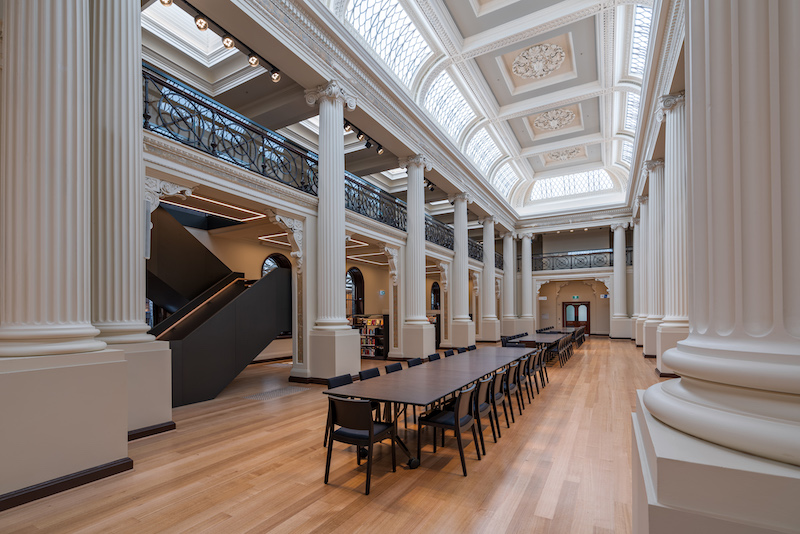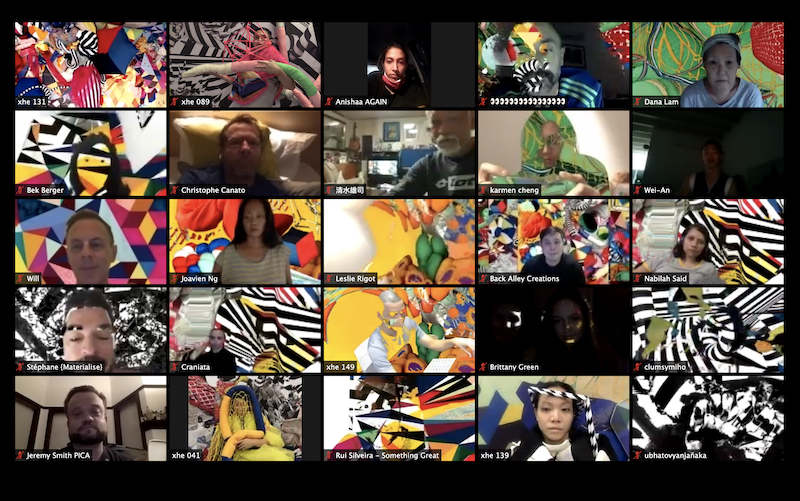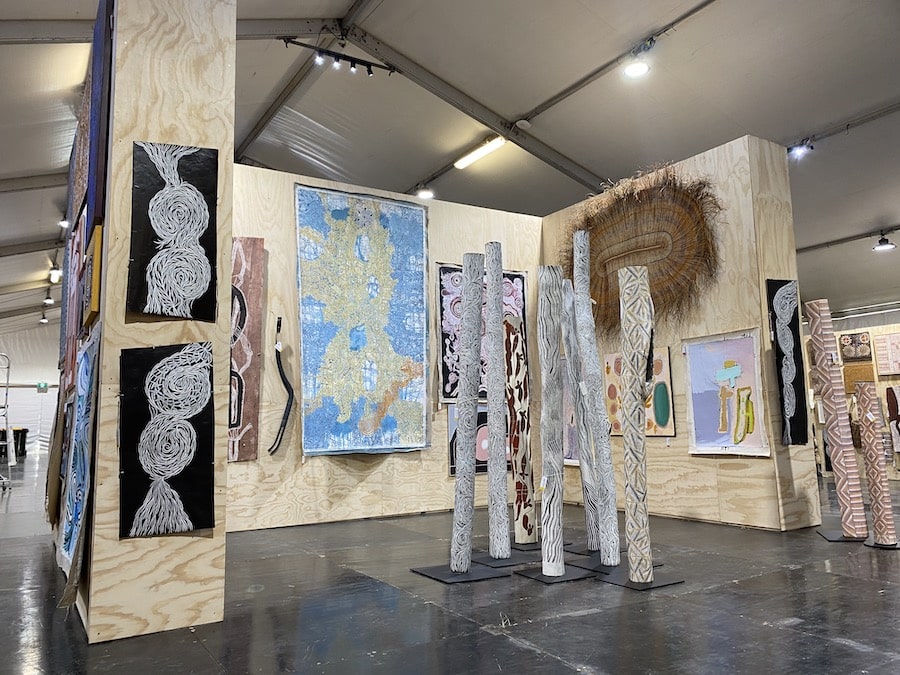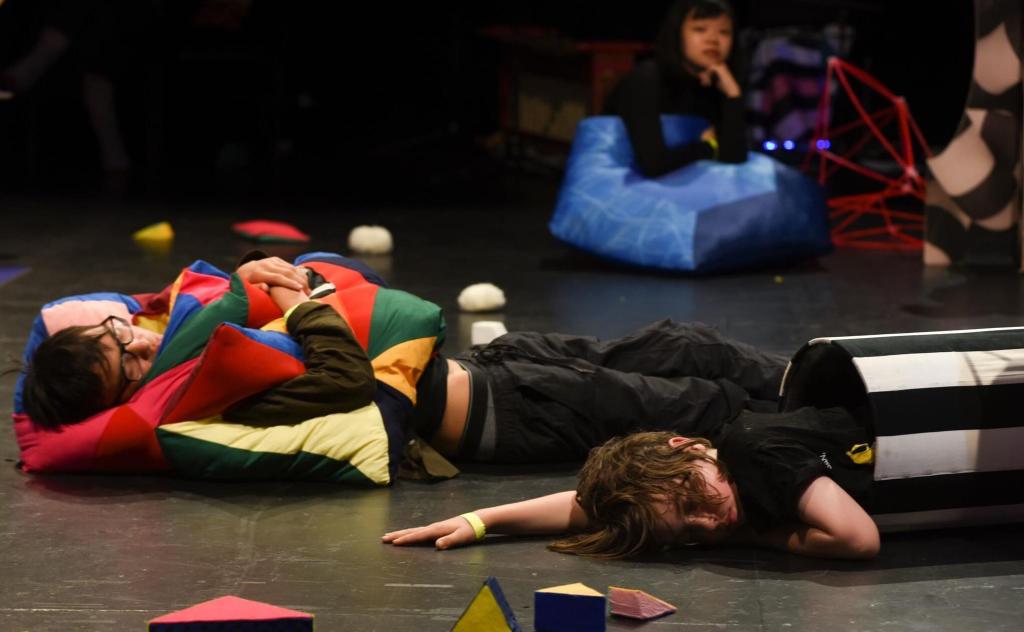21 March marks the one year anniversary for the national lockdowns imposed as the Coronavirus pandemic took hold in Australia.
The subsequent months were undoubtedly tough, and few would say that have fully recovered. However, there were wins amongst the blows, including positive changes around the way we work, the way we collaborate, and the way we respect others.
We asked 15 arts organisations nationally: what were the greatest lessons learnt, or the greatest wins for your organisation, that came out of this pandemic?
Here are their responses.
YOU CAN’T RUSH IT
Cheyne Mitchell – Artistic Director, Mudlark Theatre (Launceston, TAS)
‘We learned that you can’t take anything for granted. Sometimes the show doesn’t go on, and that audiences in regional centres aren’t going to come flooding back. They need time and support, and so do we.’
REVALUING SOCIAL IMPACT
Jessica Alice – Director, Writers SA
‘At Writers SA we never lost sight of our social impact; our responsibility is to serve our community and lead advocacy for the literary sector. We created new ways to support writers – by April we’d transitioned to online so we could keep paying writers to present events and connect with our members isolated at home, and in July we launched a national book review program for authors releasing books into the void of the pandemic. We also mobilised our sector to contribute to the Parliamentary inquiry into the creative industries, calling for a national cultural policy and new investment for literature.’

State Library Victoria, The Ian Potter Queen’s Hall. Photo Patrick Rodriguez.
Kate Torney – CEO, State Library Victoria
‘The pandemic showed us that libraries are more relevant than ever! In just one year, our online audiences doubled and we delivered over 150 digital programs. We had more than 1.7 million website visits and our social media content reached over 24 million users. We recorded our highest ever online collection usage; our librarians responded to nearly 5000 reference and research enquiries. We learnt that we know how to connect with all Victorians, no matter where they are, giving them better access to the breadth of knowledge, information, programs and services that we offer.’
Sean Pardy – Artistic Director, Brown’s Mart Theatre, Darwin (NT)
‘My great lesson, or perhaps I should re-phrase it as my greatest reminder, is how adaptable, resilient and necessary artists are. During the period of lockdown, the artists we work with used their creativity to find different ways to create. Once we could open again, I was reminded that we need these stories. Audiences were hungry, they were keener than ever to attend and we were so pleased to welcome them back. The greatest win? That even under adversity artists will create.’

PICA Zoom screenshot. Image supplied.
Amy Barrett-Lennard – Director, Perth Institute of Contemporary Arts (WA)
‘Over the last 12 months we’ve learnt just how responsive and resilient we can be as an organisation but also how frighteningly fragile the existence of independent artists and arts workers really is. We’ve learnt that engaging with artists and audiences through digital means opens up whole new possibilities and can certainly expand our reach and amplify our impact. It can’t and won’t replace the magic and essence of “IRL” interaction, but a hybrid mix of live and digital programming is an exciting proposition, nevertheless.
‘Most importantly, we’ve learnt that during times of danger, uncertainty and physical isolation it is the arts that people turn to for connection, comfort, reassurance and reaction.’
RETHINKING YOUR STAFF & COLLEAGUES
Kevin Sumption, Director and CEO, Australian National Maritime Museum (NSW)
‘The way our staff came together to help the museum through the pandemic was truly remarkable. They made themselves available to carry out all kinds of duties, many they had to be trained for as it wasn’t their day to day work, in order to help the museum to continue to operate and stay safely open. In addition, recognition of the skills of teams like our IT team, who were able to get over 100 staff up and working from home in a safe and secure manner, doing this incredible amount of work in a matter of days.’
Ros Abercrombie – Executive Director, Regional Arts Australia
‘Over the past 12 months I have been reminded how diverse and extraordinary artistic practice in regional Australia is. On 9 April 2020, the Hon Paul Fletcher MP, Minister for Communications, Urban Infrastructure, Cities and the Arts announced the federal government’s $10 million investment in the Regional Arts Fund. This was a game changer and has provided opportunities to strengthened artistic and creative practice of regional artists, organisations and communities.
‘My reflection has been the extraordinary response and support of colleagues. Those relationships cannot be over emphasised or forgotten. I want to thank artists and arts organisations for the roles that they are playing.’
Emma Webb – Director, VITALSTATISTIX (SA)
‘I feel like in South Australia that there has been a greater effort between smaller and larger institutions to collaborate together, particularly where these collaborations can really support independent artists. And that has been actively encouraged or even mandated by the South Australian Government too. I really hope that the new funding programs and larger investment in the sector, and the policy focus of employment of artists, remains beyond 2021 as that is what will be needed to sustain the sector in the longer term.
‘Within my own organisation, Vitalstatistix, we have really been considering how we can continue to take the unpaid admin load off artists, how we can simplify some of our processes for selecting and commissioning artists; and we are beginning a new artistic program focused on precarity and labour issues in the arts.’
Sophia Hall – Chief Executive Office, Brown’s Mart Theatre (NT)
‘Just as artists once again demonstrated their extraordinary resilience and immeasurable creative capacity in responding to the pandemic dilemma with courage and imagination, so we, as an organisation, became more adaptable. Working from home is no longer a foreign concept and we have become much more flexible in supporting the many varied needs of those who work with us.
‘We were also challenged – importantly – around health and wellbeing. We are unpicking the overwork and “soldiering on” tendencies that our sector has developed and we are paying special attention to the ongoing mental health impacts of the past year.’
KEEPING AN EYE ON THE FUNDAMENTALS
Brian Parkes – Chief Executive Officer, JamFactory (Adelaide, SA)
‘JamFactory has worked hard over many years to build a highly engaged, governance-focused Board, a stable and diverse management team and a healthy cash reserve. Our on-going attention to these basic business fundamentals has enabled us to be creatively ambitious over the years and provided tremendous organisational resilience through the pandemic.
‘The public appetite for handmade things and hand-making experiences has grown markedly through COVID and the craft and design sector has generally fared better than other areas of the arts. 2020 saw a seven-fold increase in JamFactory’s online sales and a sharp increase in demand for short course workshops.’

Installation view, 2020 Tarnanthi Art Fair. Image courtesy Agency.
PERMISSION TO BE AMBITIOUS
Kade McDonald – CEO, AGENCY (VIC/NT)
‘One of Agency’s greatest achievements in 2020 was co-producing the 2020 Tarnanthi Art Fair in partnership with the Art Gallery of South Australia and 49 remote Indigenous Art Centres from across Australia. Agency worked closely with the Art Centres (who due to the pandemic could not attend the fair in person) to curate the public exhibition, deliver an online virtual walkthrough of the fair, and facilitate over $1mil of art sales over the three-day event with 100% of the money going to the participating Art Centres. It demonstrated that isolation – be it COVID-driven or living remotely – isn’t a barrier, and thinking has shifted around that.’
Liz Hughes – CEO, National Institute of Dramatic Art (NSW)
‘We stress tested our creative DNA. Embracing experimentation became, more than a learning framework, a vital component. For the show to go on, we adapted to remotely teach and learn and to deliver incredible audience experiences outside of NIDA Theatres. The acclaim we received following our Digital Theatre Festival in August gave us the energy we needed to deliver two in-house seasons in October and December – 12 shows in total. When most theatres the world over were closed, I wonder if that made us the most active performing arts venue globally.’
Amy Hollingsworth – Artistic Director, Australasia Dance Company (QLD)
‘We made the commitment early on to use the limitations of the year to focus on creating and cultivating – accelerating our plans for new works already pipelined thanks to government financial support and initiatives. Reimagining our performance spaces and mediums is a key part of our vision as a company and the restrictions created up by the pandemic presented the opportunity to turn our focus to producing digital work and a COVID-safe site-specific Festival piece. We can’t wait to release our two new dance films, as well as presenting some incredible new works created while theatres were closed.’





